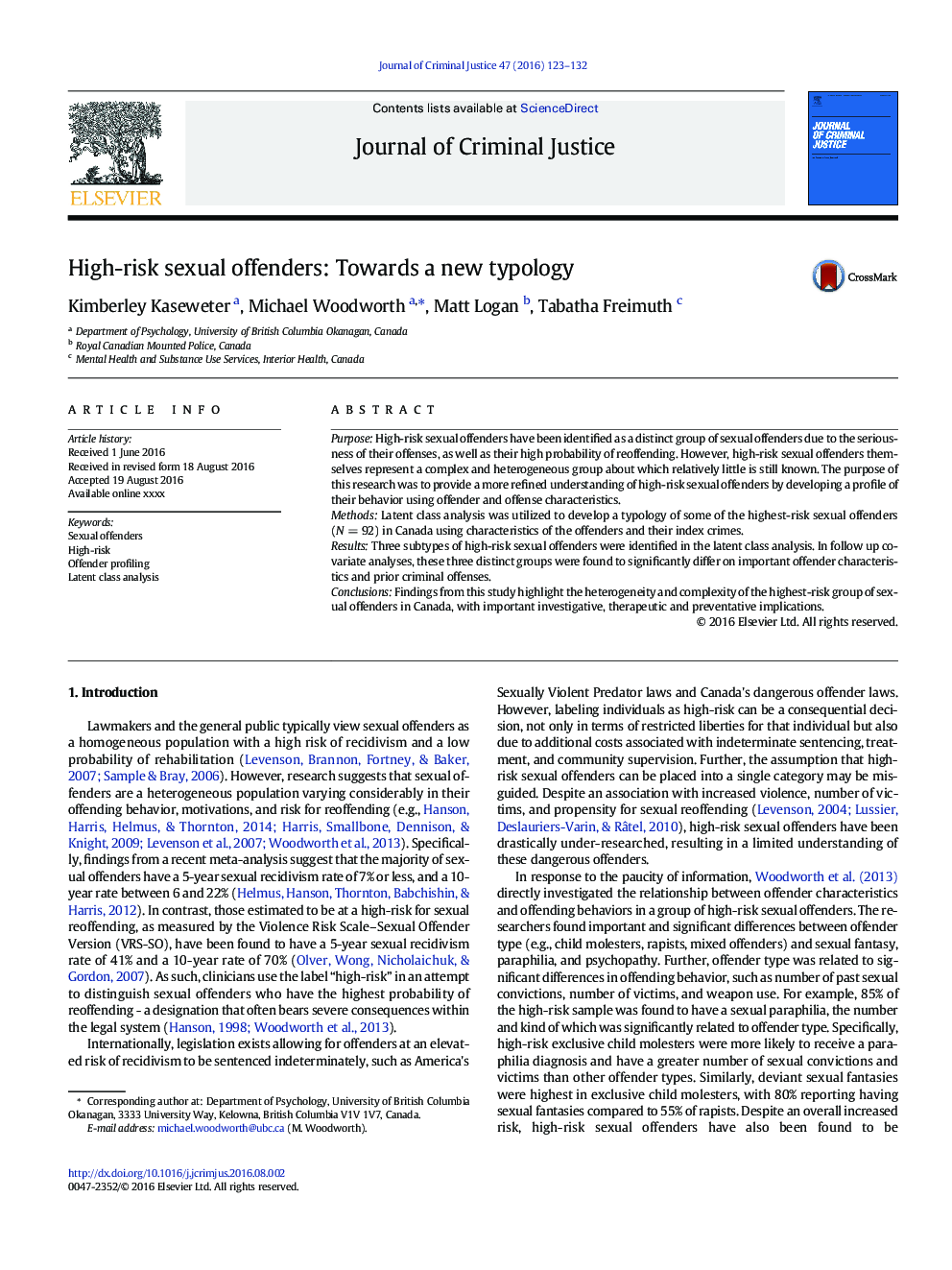| Article ID | Journal | Published Year | Pages | File Type |
|---|---|---|---|---|
| 882614 | Journal of Criminal Justice | 2016 | 10 Pages |
•Latent class analysis was used to develop a typology of high-risk sexual offenders.•Three subtypes identified: Coercive child molester, sexually sadistic rapist & stranger focused.•Subtypes were related to characteristics of the offender and their previous criminal behavior.
PurposeHigh-risk sexual offenders have been identified as a distinct group of sexual offenders due to the seriousness of their offenses, as well as their high probability of reoffending. However, high-risk sexual offenders themselves represent a complex and heterogeneous group about which relatively little is still known. The purpose of this research was to provide a more refined understanding of high-risk sexual offenders by developing a profile of their behavior using offender and offense characteristics.MethodsLatent class analysis was utilized to develop a typology of some of the highest-risk sexual offenders (N = 92) in Canada using characteristics of the offenders and their index crimes.ResultsThree subtypes of high-risk sexual offenders were identified in the latent class analysis. In follow up covariate analyses, these three distinct groups were found to significantly differ on important offender characteristics and prior criminal offenses.ConclusionsFindings from this study highlight the heterogeneity and complexity of the highest-risk group of sexual offenders in Canada, with important investigative, therapeutic and preventative implications.
